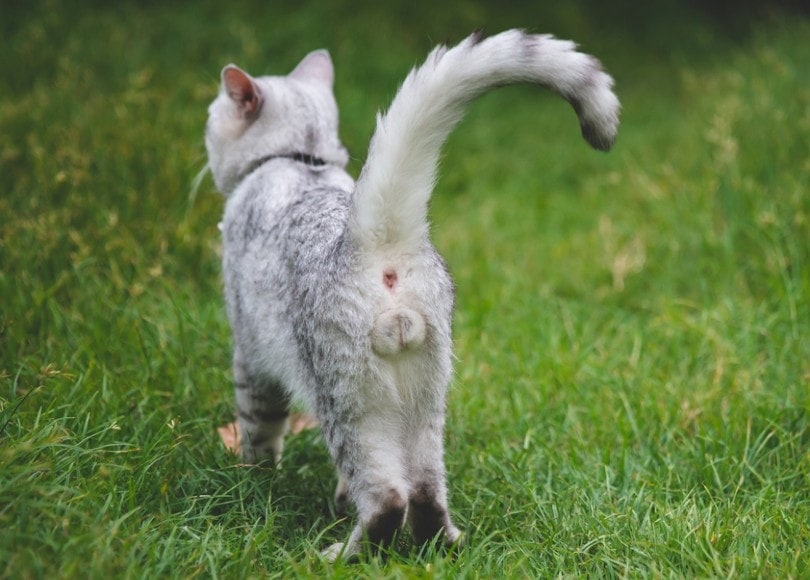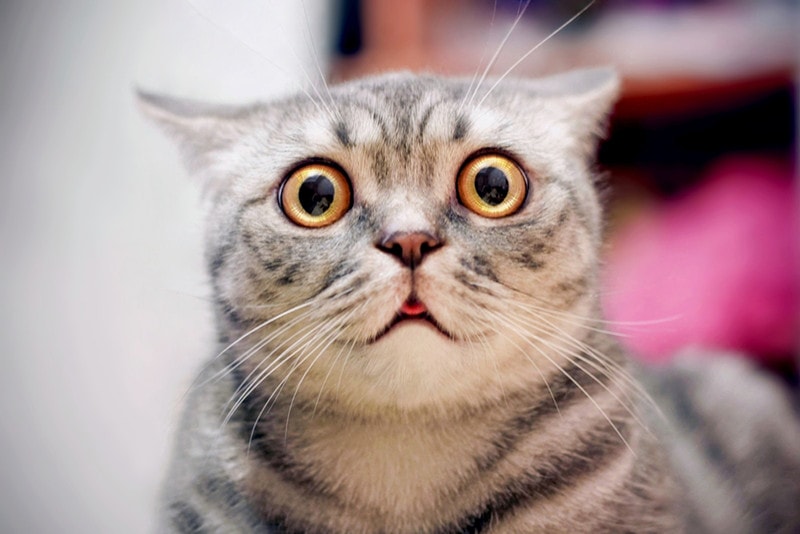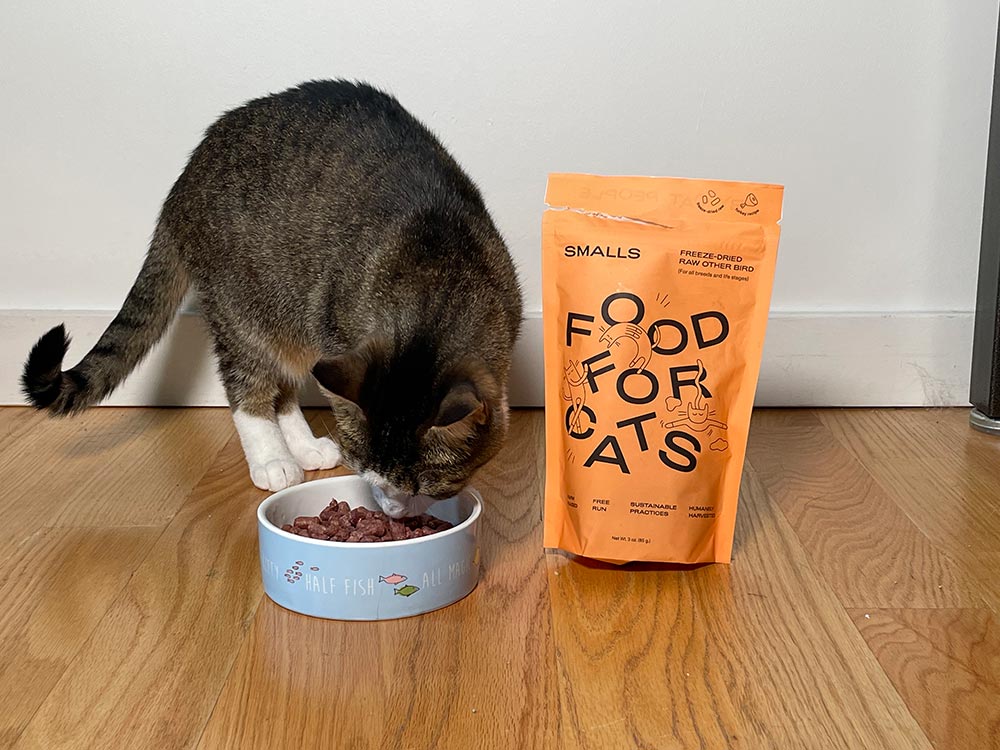My Cat Lost a Tooth, What to Do? Vet-Approved Facts & Tips

Updated on
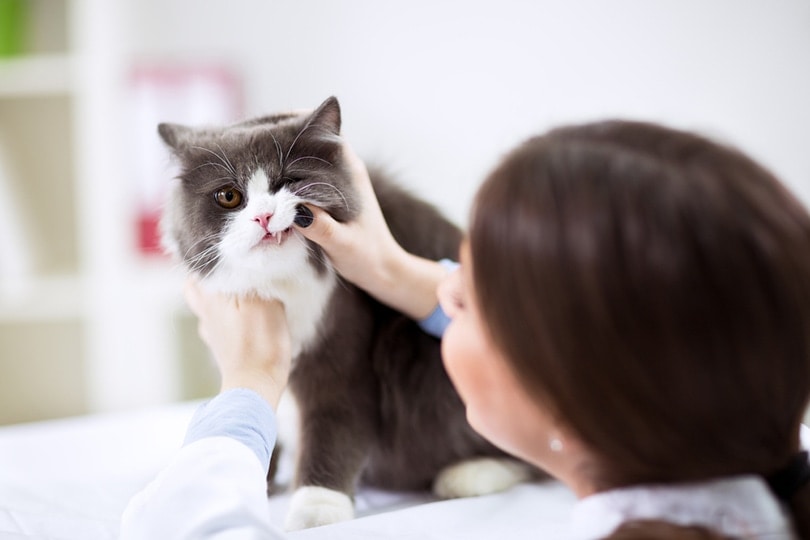
When a cat loses a tooth, it can be alarming. Maybe you found a tooth on the floor or just noticed that it was missing when your cat yawned. Sudden tooth loss is not a normal thing that adult cats experience. When adult cats lose teeth, there’s always a reason that it happens.
Kittens, however, do lose their baby teeth before their adult teeth grow in. Once these adult teeth are in place, they should remain in the cat’s mouth permanently.
Let’s look at the causes of tooth loss in cats and what you can do about it if it happens to your kitty.
Kitten Teeth
Like human babies, kittens are born without teeth. From 2 to 4 weeks of age, their first baby teeth start to grow. These are called deciduous milk teeth, and they will begin to fall out when the kitten is 3.5–4 months old. Then the permanent adult teeth grow in.
Kittens have 26 deciduous teeth and 30 adult teeth. When kittens have their deciduous teeth, their gums may feel sore and become mildly inflamed. You may find these teeth on the floor or in spots where the kittens are sleeping. This is nothing to worry about. It’s also normal for kittens to swallow their baby teeth. Finding a deciduous tooth when your kitten is teething means everything is progressing as it should.
By the time that the cat is 6–7 months old, all of their adult teeth should be grown in.
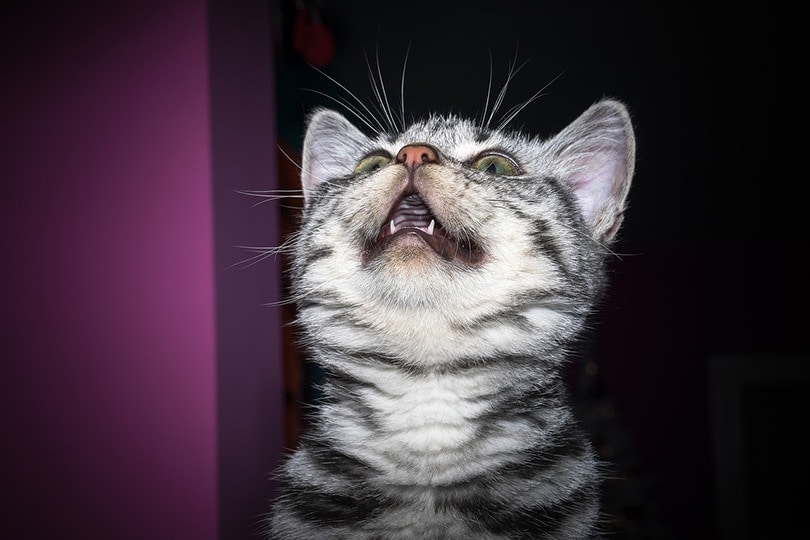
When to See a Vet
If your cat is 7 months old and they still have their baby teeth as well as their adult teeth, it can cause problems in the mouth. If they have two rows of teeth that look overcrowded, it’s best to have your veterinarian take a look at them.
Also, if you notice any redness or inflammation of the gums, or discharge (like blood), or your kitten appears to be in pain, they need to be examined by a vet as soon as possible.
Adult Cat Teeth
Adult cats should not normally lose their teeth. If you notice that one of your cat’s teeth is missing or find their tooth on the floor, you’ll need to find out what’s going on in their mouth. There are two main reasons that your adult cat has lost a tooth:
- They sustained an injury
- They have dental disease
Since neither of these reasons means anything good, it’s always best to call your vet if you notice that your cat has lost a tooth. They can examine the remaining teeth and see if there is anything that needs to be medically addressed.
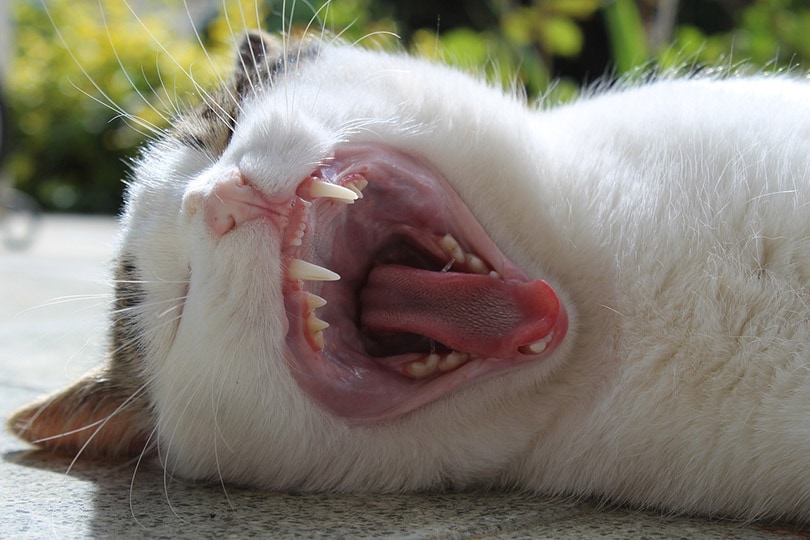
Injury
Trauma to the face can cause your cat’s teeth to become loose or dislodged completely. The canine or fang teeth are the most common teeth to be damaged during an injury. Sometimes, they don’t come out completely, but instead, break off. Fractured teeth can be a problem, especially if the nerve is exposed.
Cats can break and loosen teeth by chewing on hard objects or fighting with other cats. Signs that your cat has a missing or broken tooth due to trauma include:
- Finding a piece of the tooth around the home
- Cat chewing on one side of the mouth
- Drooling
- Pawing at the mouth
- Facial swelling
- Refusing to eat dry food
- Shying away from being touched on one side of the face
What to Do
If you notice a missing or broken tooth in your cat’s mouth and they’ve recently had facial trauma, take your cat to the vet right away for a full examination. The broken tooth may need to be surgically removed before it causes an infection. If the tooth is broken but otherwise healthy, it may be able to remain in place.
The most important thing to do is have your cat examined to be aware of any other injuries that they may have. If the tooth is missing but the cat is otherwise healthy, there may be no need for further treatment.
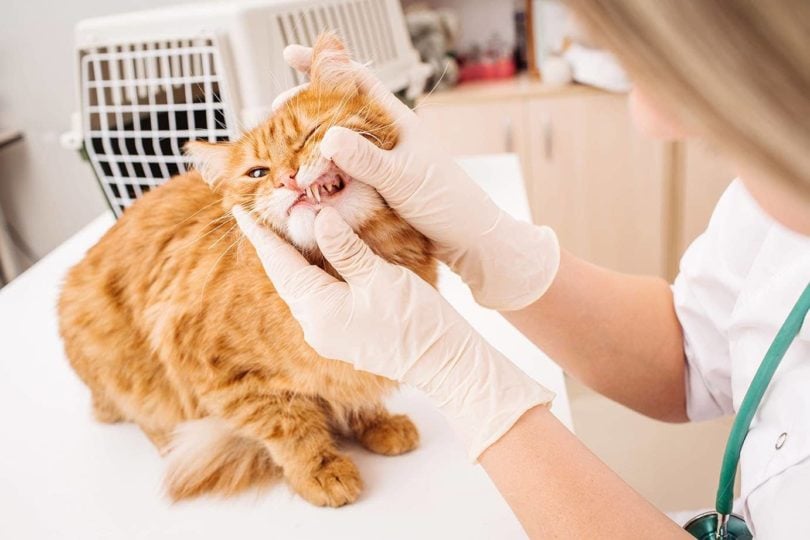
Dental Disease
More than half of all cats over 3 years old have some sort of dental disease, even if it’s just beginning. The most common dental diseases are periodontal disease and gingivitis. These are caused by poor oral hygiene.
Periodontal disease can cause pain and inflamed gums in your cat’s mouth. Your vet will need to diagnose the issue and advise you on what treatment courses to follow.
Tooth Resorption
When the dentin inside the teeth becomes damaged, the gum will naturally reabsorb the damaged teeth to prevent further infection and problems. This is called tooth resorption and is a painful condition for the cat. It can only be detected through radiographs. Treatment involves extracting the affected teeth and roots. If your cat’s teeth look like they’re disappearing rather than falling out, tooth resorption is a possibility.
What to Do
If your cat is suffering from dental disease, they’ll need treatment from a vet. Going forward, their teeth may need to be brushed regularly, and they will need yearly exams and cleanings to keep them from losing more teeth in the future. Depending on how many teeth they’ve lost, their diet may need to be adjusted to something easy for them to chew.
Cat Tooth Loss Prevention
The best thing to do when your adult cat has lost a tooth is to consult your vet. If your cat’s tooth falls out and they swallow it, you may not even know it’s missing. The cat could be in pain and you won’t know it. Regularly lifting your cat’s lip and inspecting their teeth can keep you aware of any changes to their gums that might lead to tooth loss.
Keeping your cat’s teeth clean is the best way to prevent tooth loss. Putting additives designed to clean teeth in their water bowl, brushing their teeth, and taking them for professional yearly teeth cleanings will help prevent dental diseases. Yearly exams and cleanings will diagnose any diseases that do begin so they can be treated immediately.
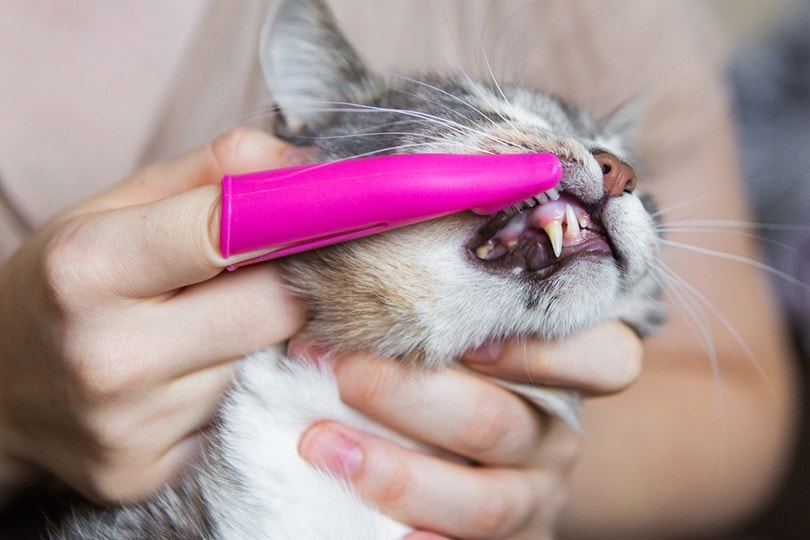
Cats with Few or No Teeth
Once you have a diagnosis from the vet for why your cat has lost teeth, your cat can still live a normal, happy life. After their health issues are cleared up, they will be much more comfortable because they’re no longer in pain.
Cats without teeth tend to do well, so if your cat is missing some or most of their teeth, there’s no need to panic. If you’re considering adopting a cat without any teeth, don’t let that stop you! Other than a possible modified diet, there’s no difference in the level of care that the cat requires.
A Toothless Cat’s Food
Some cats with missing teeth can continue to eat their regular food, and nothing has to be changed. Cats missing most or all of their teeth, though, may need to only eat canned food. Their teeth are mainly used for shredding and grabbing food instead of chewing. Their rough tongues help them push the food back to be swallowed.
Dry kibble can still be used if it’s moistened first or mixed with wet food to give cats an easier time eating it.
Conclusion
It’s normal for kittens to lose their teeth at a certain age, but adult cats should not normally lose any of their teeth. If you find a tooth around the house or you notice that your cat is missing one, make an appointment with your vet to find out what happened. If tooth loss is related to dental disease, treatment will be necessary to prevent further loss, infections, and pain.
Cats without teeth can still eat and manage to live happy lives. They can eat wet or dry food and be active and playful. Check your cat’s teeth regularly to make sure there are no signs of infection or injury. Having your cat’s teeth professionally examined and cleaned once a year will keep them healthy for years to come.
See also:
Featured Image Credit: didesign021, Shutterstock



